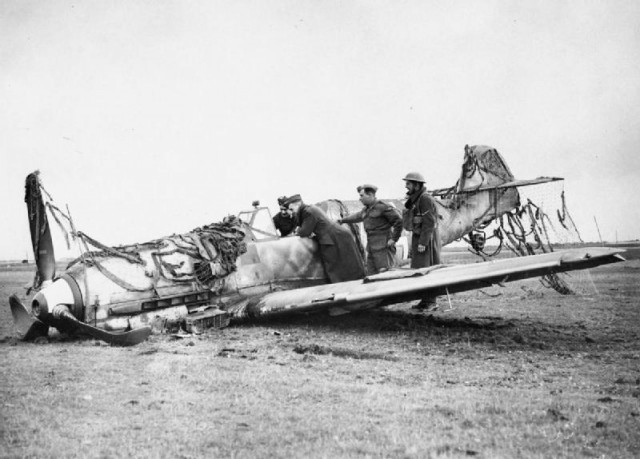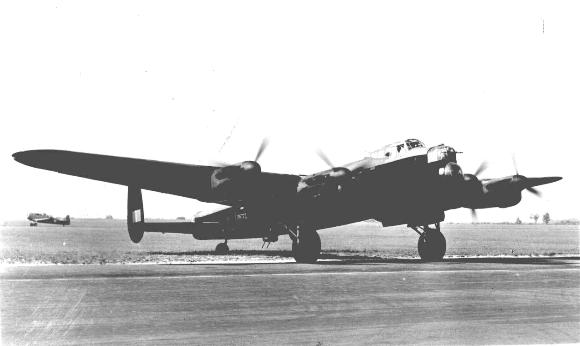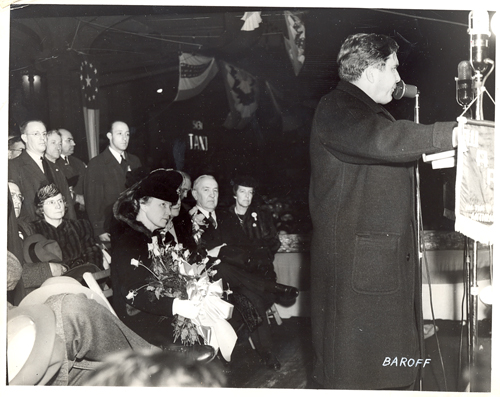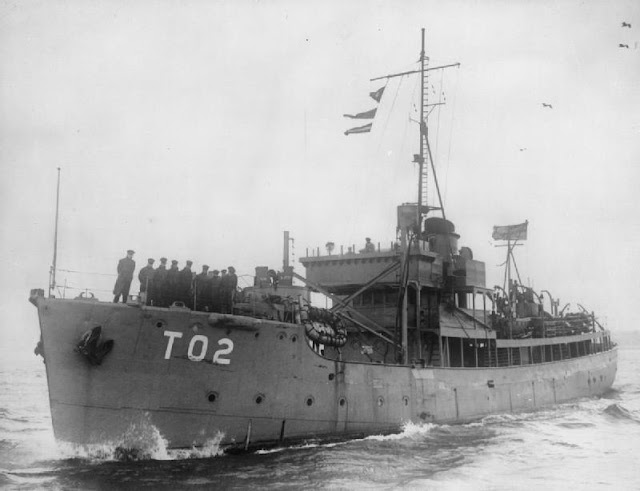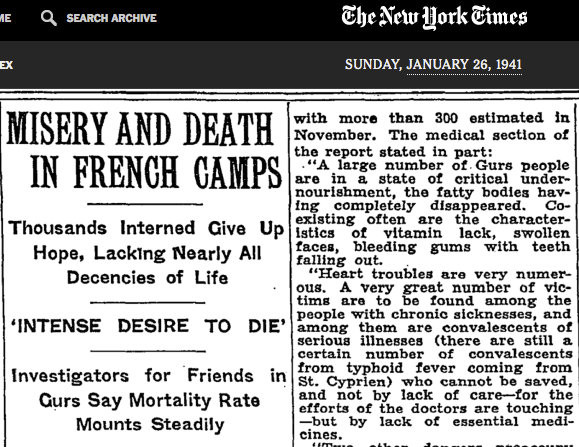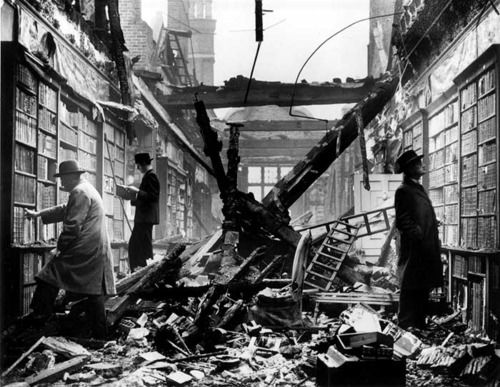Italian/Greek Campaign: In Greece, the Greek advance grinds forward on 5 December 1940. Greek I Corps captures Delvinë. Greek II Corps also advances. The Greeks advance on Argyrocastro and take heights near Librohovo, six miles southeast of the town. The Greek air force attacks Italian communications.
The British hand over a dozen Gloster Gladiator biplanes to the Greek air force.
European Air Operations: During the day, RAF Bomber Command raids Düsseldorf and Turin. Coastal Command attacks Eindhoven, Rotterdam, Lorient, and Haamstede. The Luftwaffe sends some fighter-bombers across during the day which drop bombs in scattered areas of East Kent. After dark, the RAF cancels its raids due to the weather, while the Luftwaffe sends small raids against London and points along the south coast.
Adolf Galland of JG 26 gets his 57th victory claim. He now has surpassed both Werner Molders and the now-deceased Helmut Wick. Galland is the leading ace of the war. Molders, however, remain active and could regain the lead.
The RAF makes plans to open ten new airfields by Spring. They will house ten fighter squadrons, ten medium bomber squadrons, and two heavy bomber squadrons.
 |
| Hilfskreuzer (Auxiliary Cruiser) Thor. Thor was a converted banana boat originally named the Santa Cruz. |
The Luftwaffe bombs and damages destroyer HMS Cameron while in drydock in Portsmouth Harbour. Cameron is one of the former US destroyers acquired in the bases-for-destroyers deal. There are 14 deaths. The destroyer capsizes as the bomb hits allow water to pour into the drydock. She can be refloated and repaired, though Cameron will never return to service. Instead, it will be used for testing purposes regarding things like bomb damage.
Italian submarine Argo torpedoes and sinks 5066-ton British freighter Silverpine. All 36 aboard perish. The Silverpine is a straggler from convoy OB 52.
Royal Navy submarine HMS Sunfish torpedoes and sinks 2182-ton Finnish freighter Oscar Midling off Stadlandet., Norway. Everybody on board perishes.
British torpedo boats MTB 29, 31 and 32 find a German freighter, the 6062-ton Paranagua, off Flushing and sink it.
Royal Navy 214-ton minesweeping trawler HMT Calverton hits a mine and sinks at the mouth of the Humber.
A severe storm hits the Irish Sea and sinks several ships before it is over.
British 632-ton collier Amlwch Rose gets caught in a storm after departing Liverpool for Dublin. It sinks in Liverpool Bay.
British 360-ton collie Privet also sinks in the rough weather in Liverpool Bay. All nine aboard perish.
Seaplane tender USS George E. Badger also gets caught in rough weather on the other side of the Atlantic and runs aground off Hamilton, Bermuda. However, luckily there is no damage, and the ship later floats off.
German freighter Klaus Schoke, seized by HMS California off the Azores and under tow to Gibraltar, sinks. The German ship's crew had tried to scuttle her, but only partially succeeded - at first.
The German coastal guns at Calais get another rare success when they damage 1107 ton British freighter Waterland in Dover Harbour.
Torpedoed several days ago, destroyer HMCS Saguenay makes it to port. It is the first Canadian naval casualty of the war.
Convoy AN 9 departs from Port Said, bound for Piraeus, Greece. It is a troop convoy carrying British troops to aid in the defense of Greece. The poor weather keeps convoys in the Atlantic in port.
German battleship Bismarck completes her sea trials in the Baltic Sea and heads for Hamburg.
U-109 (Korvettenkapitän Hans-Georg Fischer) is commissioned.
Royal Navy destroyer HMS Salisbury, formerly the USS Claxton, is commissioned.
At Malta, the local government puts out an appeal for donations to fund Christmas parties for refugees. There are literally thousands of refugees housed in various villages throughout the island.
Battle of the Pacific: Australian 1052 ton freighter Nimbin hits a mine and sinks off Norah Head, New South Wales. There are seven deaths and 13 survivors. The mine was laid by the German raider Pinguin in November. This is the first Australian registered merchant ship sunk. Fortunately for the survivors, the ship is carrying a cargo of plywood bundles that float and provide a means to survive until rescued by SS Bonalbo a few hours later. Captain Bryanston goes down with the ship.
Anglo/French Relations: Louis Rougier, Marshal Petain's unofficial representative to Great Britain, sends Prime Minister Winston Churchill a letter. It clarifies Petain's intentions regarding participation in the war. Specifically, Petain promises not to make a separate peace with Germany - a hollow assurance given the current state of relations between Vichy France and Germany. He also promises not to allow Germany to occupy French colonies in North Africa, nor allow it possession of the French fleet. In addition, Petain promises not to contest Charles de Gaulle's occupation of Gabon. Basically, the promises are simply rehashes of old promises or meaningless gestures, and some of them will be broken before the war is over while others will be kept.
Anglo/US Relations: The subject of how to continue supplying weapons to Great Britain despite its growing financial issues heats up. Talks are proceeding in Washington regarding a possible $2.5 billion loan to Great Britain for war aid, to be secured by British gold production over the coming five years. Bankers consider the UK to be a good credit risk, but the Johnson Act prohibits private lending to any nation in default of its Great War debt - such as Great Britain. President Roosevelt, touring the Caribbean with Harry Hopkins on the USS Tuscaloosa, also is thinking about the same general topic, but his solution isn't a loan - it is what will come to be called Lend-lease.
German/Spanish Relations: The German ambassador in Madrid telegrams Foreign Minister Ribbentrop and tells him that the Spanish have agreed to allow German tankers to anchor in small bays. These can be used to refuel U-boats and raiders. The scheme depends upon the British not finding out. This is another of the Spaniard's small gestures toward the Germans while also cultivating friendly relations with the British.
 |
| The Seattle Daily Times, 5 December 1940. |
The legend about Wiedemann saving Hitler's life appears to be apocryphal. Hitler survived the 1939 bombing because he had left the building before the bomb went off. It is not inconceivable that Wiedemann himself spreads these tales far from Berlin, where there is nobody who knows better.
The paper also reports more generally that the Pacific Northwest is a hotbed of spy activity due to Boeing's bomber plants in the Seattle area. In fact, the Germans have very little interest in the US West Coast and they - or at least Foreign Minister Ribbentrop - consider the San Francisco post to be the ultimate diplomatic backwater, a place to send people they want to get out of the way. While Wiedemann does know Hitler, he by no means is within his inner circle.
That said, there actually is a growing German presence on the West Coast at this time. However, it is not in the Pacific Northwest, but just outside Los Angeles. The Murphy Ranch is an isolated, self-contained compound with its own water storage tank and energy production. The premises survive into the 21st Century, though gradually demolished by its current owner, the City of Los Angeles.
German Military: Adolf Hitler meets with his two army chiefs, Colonel-General Franz Halder, Chief of the General Staff, and Field Marshal Walther von Brauchitsch, Commander-in-Chief of the Army. They discuss the plans for Operation Barbarossa, which Hitler approves and following which he begins preparing a Fuhrer Directive. The operational plan at this time, which eventually will be called Operation Barbarossa, for now, is called Operation Otto. The Germans have a tendency to re-use code names, and Otto is named after the crown prince of Austria-Hungary at the time, Otto von Habsburg. It previously was used to refer to the Anschluss with Austria in 1938.
The plan at this stage envisions three axes of invasion in the north, center, and south of the Soviet border. The strength of each prong will remain a subject of much deliberation and disagreement over the coming months - some of the Generals prefer maximum effort in the direction of Moscow, while Hitler sees the taking of the Soviet capital as essentially pointless. The tentative timing for the invasion is May 1941.
Another topic broached at the meeting is Operation Felix. Hitler is trying to convince Franco to allow the passage of German troops, but the Spaniards do not want to alienate the British. Hitler tentatively sets 10 January as the date for the Wehrmacht to cross the border and 4/5 February for Operation Felix itself. Everything, however, depends upon Franco's assent - though some in the German High Command, such as Reichsmarschall Hermann Goering, think that the Wehrmacht should cross the border regardless of what Franco allows.
Canadian Military: The Royal Navy commissions four former US Navy destroyers acquired in November at Halifax during the destroyers-for-bases deal:
- USS Ringgold (DD-89) becomes HMS Newark (G 08)
- USS Sigourney (DD-81) becomes HMS Newport (G 54)
- USS Tillman (DD-135) becomes HMS Wells (I 95)
- USS Robinson (DD-88), becomes HMS Newmarket (G 47)
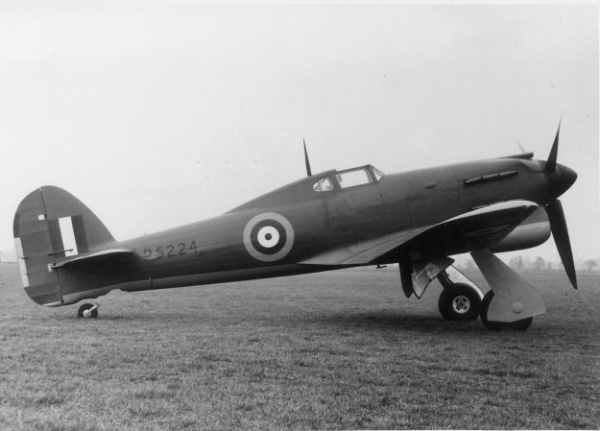 |
| The Hawker Tornado. The project ultimately was canceled but served as the foundation for later aircraft Typhoon and Tempest. |
US Military: The US 17th Pursuit Squadron, formerly based at Selfridge Field, Mount Clemens, Michigan, transfers to Nichols Field, Luzon, Philippines. It does not yet have its fighters and begins practicing with Boeing P-26 Peashooters. Even when they get their "real" aircraft, Seversky P-35s, they will be flying obsolete planes.
Construction begins on the 20-mile US Army Railway serving Ft. Leonard Wood, Missouri, which includes a major trestle that can still be visited. This is part of a major national defensive initiative to build up military infrastructure.
US Government: Admiral William D. Leahy, USN (Retired) becomes the new US Ambassador to Vichy France.
British Government: In a very rare gesture toward peace, the House of Commons of Parliament votes on a peace amendment offered by John McGovern of the Scottish Independent Labour Party. The measure fails, 341-4. There always is a peace faction England, though it makes little noise outside of times like this.
India: The British release from prison Nationalist leader Subhas Chandra Bose after a hunger strike. They will continue to keep Bose under house arrest.
China: The Chinese Communists conclude their Hundred Regiments Offensive. They have captured much ground, but also taken heavy casualties.
American Homefront: Director Ludwig Berger's "The Thief of Baghdad" opens at Radio City Music Hall in New York. Zane Grey thriller "West of the Badlands" also opens today.
 |
| Artists Diego Rivera and Frida Kahlo take out their second Marriage License at San Francisco City Hall, December 5, 1940. |
December 1940
December 1, 1940: Wiking Division Forms
December 2, 1940: Convoy HX 90 Destruction
December 3, 1940: Greeks Advancing
December 4, 1940: Italian Command Shakeup
December 5, 1940: Thor Strikes Hard
December 6, 1940: Hitler's Cousin Gassed
December 7, 1940: Storms At Sea
December 8, 1940: Freighter Idarwald Seized
December 9, 1940: Operation Compass Begins
December 10, 1940: Operation Attila Planned
December 11, 1940: Rhein Wrecked
December 12, 1940: Operation Fritz
December 13, 1940: Operation Marita Planned
December 14, 1940: Plutonium Discovered
December 15, 1940: Napoleon II Returns
December 16, 1940: Operation Abigail Rachel
December 17, 1940: Garden Hoses and War
December 18, 1940: Barbarossa Directive
December 19, 1940: Risto Ryti Takes Over
December 20, 1940: Liverpool Blitz, Captain America
December 21, 1940: Moral Aggression
December 22, 1940: Manchester Blitz
December 23, 1940: Hitler at Cap Gris Nez
December 24, 1940: Hitler at Abbeville
December 25, 1940: Hipper's Great Escape
December 26, 1940: Scheer's Happy Rendezvous
December 27, 1940: Komet Shells Nauru
December 28, 1940: Sorge Spills
December 29, 1940: Arsenal of Democracy
December 30, 1940: London Devastated
December 31 1940: Roosevelt's Decent Proposal
2020




